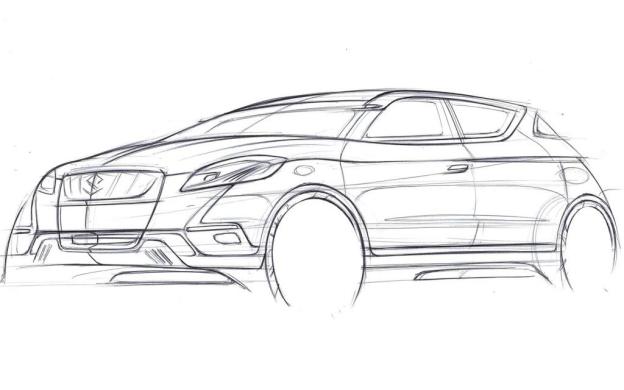 Suzuki makes great motorcycles, but its car line has always been a little lackluster. Four-wheeled Suzukis have always been cheap and quirky, but never mainstream hits. The company hopes to change that with the S-Cross, a C-segment crossover concept that will debut at the Paris Motor Show in September.
Suzuki makes great motorcycles, but its car line has always been a little lackluster. Four-wheeled Suzukis have always been cheap and quirky, but never mainstream hits. The company hopes to change that with the S-Cross, a C-segment crossover concept that will debut at the Paris Motor Show in September.
Since the S-Cross won’t see the light of day for over a month, Suzuki is keeping the details to a minimum. The company did say that the concept’s styling follows an “Emotion x Quality x Aerodynamics” theme. We didn’t know emotion and quality could be quantified, much less multiplied by aerodynamics.
Suzuki says the results of this equation are “design elements which suggest stability and solidity also help create a cutting-edge crossover look.” The sketch Suzuki released shows a crossover with an upright, SUV-like front end, combined with thin headlights and a low roofline; the S-Cross appears to have a good mix of car and SUV styling traits, befitting a crossover. A teaser image shows LED driving lights and an odd, z-shaped indent connecting them with the headlights.
Expect the real, metal-and-plastic S-Cross to be less exaggerated than the sketch, especially in terms of front and rear overhangs and wheel size. A production version will probably be watered down further to meet safety standards.
As a C-segment vehicle, the S-Cross corresponds to the EPA’s “compact” size class. That means it will compete against compact crossovers like the Ford Escape, Mazda CX-5, and Honda CR-V.
The compact class is where Suzuki currently lives, so the S-Cross will be a sensible addition to the family. The SX4, Kizashi, Grand Vitara SUV, and Equator pickup (a rebadged Nissan Frontier) rely on their small size to achieve decent fuel economy, and their low prices and good warranties to attract customers. All of these vehicles have some redeeming features, but they don’t really stand out in any way. That is especially true in the styling department, which explains why Suzuki is putting so much emphasis on the S-Cross’ design.
Thanks to the rollover-prone Samurai of the 1980s some people are still wary of Suzukis. Building a more substantial vehicle that people won’t forget could finally take care of that reputation. It wouldn’t help if the S-Cross had the sporty feel of one of Suzuki’s bikes, either.
The S-Cross makes its official debut September 27 at the Paris Motor Show, with more information to follow shortly after.



